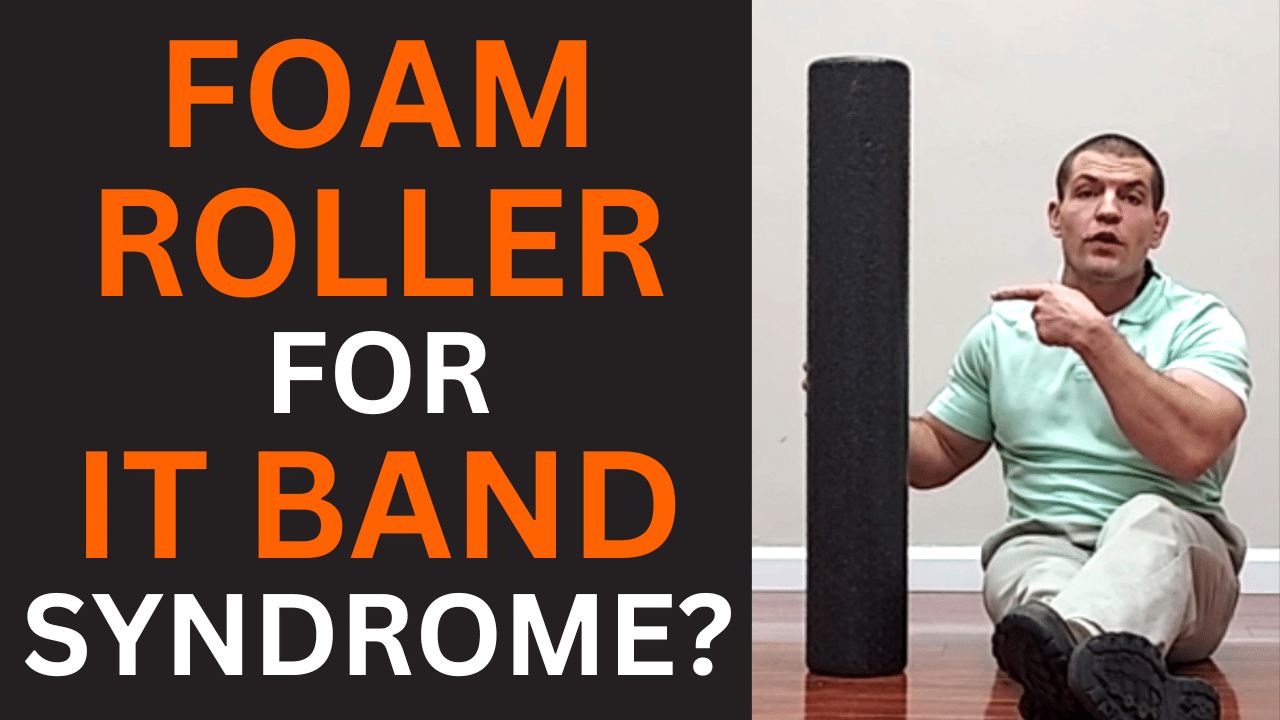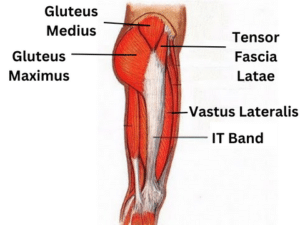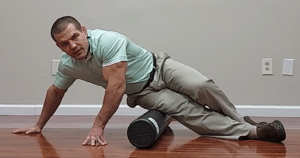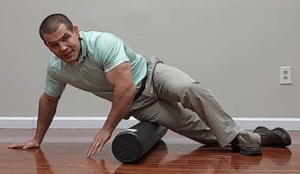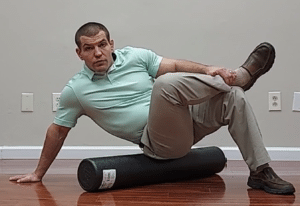Should You Use A Foam Roller For IT Band Syndrome?
If you've hung aroud a gym for any prolonge period of time, you've probably heard people recommend using a foam roller for IT band syndrome. Likewise, online running and CrossFit communities often talk about foam rolling your IT band.
But does using a foam roller really help IT band syndrome?
Watch the video to learn how to use a foam roller for IT band syndrome, plus what's even more important than foam rolling if you want a long-term solution for IT band syndrome.
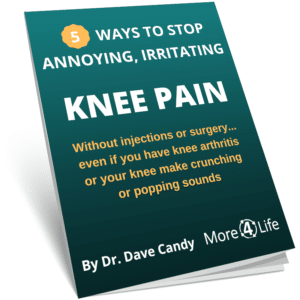
What Is The IT Band?
"IT band" is short for iliotibial band.
The ilium is your hip bone and the tibia is your shin bone.
So the name iliotibial band describes the path of the IT band.
Since the IT band crosses both the hip and the knee, it can cause either pain on the outside of the hip, or pain on the outside of the knee.
What is the IT band made of?
The IT band is essentially a long tendon.
Technically speaking, it's actually fascia (latin for "band").
Fascia is another type of connective tissue made of the same material as tendon. (Think of the plantar fascia in the foot)
So for practical purposes, you can think of the IT band like a tendon.
Now you'll see in the image above that the IT band connects to a muscle called the tensor fascia latae.
That muscle is so-named because it "tenses the side band" (translated from latin).
Overuse of the tensor fascia latae, is often what causes IT band syndrome.
We'll get to that later on though.
How Do You Stretch Your IT Band?
In short, you don't.
You really don't want to stretch tendons or fascia because they tie muscles to bones.
The IT band is made of thick, dense collagen fibers.
In order to stretch those fibers, you'd actually have to injure the tendon.
So that's not the goal of using a foam roller.
So What Really Happens When You Use A Foam Roller For Your IT Band?
When you use a foam roller, you release trigger points in muscles around the IT band.
On a picture it looks like two muscles, but truly, it's the SAME muscle in front and in back of the IT band.
It's one of your quadriceps muscle called the vastus lateralis.
The vastus lateralis runs underneath your IT band and there little attachments between the fascia of the IT band to the vastus lateralis.
You can develop adhesions or places where the IT band and the vastus lateralis get adhered together, and that can affect your mobility as you're doing activities such as running, jumping, or squatting.
So using a foam roller is good to help remove those adhesions.
Again though, foam rolling doesn't really stretch the IT band itself, and that's good.
How To Use A Foam Roller For IT Band Syndrome
Here's how to use a foam roller if you do have IT band syndrome:
Foam Rolling Your Vastus Lateralis
You'll want to lay with the IT band that's sore over top of the foam roller, but not really directly over top.
Laying with your IT band directly over top of a foam roller is really pretty uncomfortable.
Again, you don't really want to try to stretch the IT band.
Doing so is painful at best and could injure the IT band at worst.
So you'll want to roll either forward or backward slightly. Make sure that your weight is either just in front or just behind the IT band.
Start with the foam roller just below the hip bone. Then roll down the outer quadriceps just behind the IT band so that you're not over the IT band itself.
Do this for 30-60 seconds.
Then roll forward so that you weight is on the vastus lateralis right in front of the IT band.
Repeat for another 30-60 seconds.
Stay roughly perpendicular with the foam roller so that there's a 90 degree angle between your leg and the foam roller.
How To Use A Foam Roller On Your Glutes
In addition to your tensor fascia latae, your gluteus maximus also attaches to the IT band.
Therefore, foam rolling your piriformis and gluteus maximus can also be helpful for IT band syndrome.
Similar to the other exercises, roll on your glutes for 30-60 seconds with an amount of pressure that's comfortable.
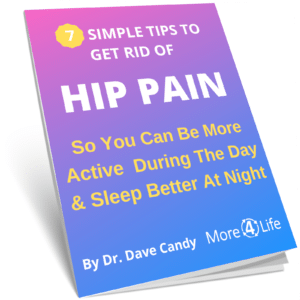
What If I Can't Get On The Floor To Use A Foam Roller?
If you have trouble getting on the floor or getting back up from the floor, or if it hurts too much to use a foam roller, you can use a massage stick instead.
Similar to with a foam roller, you can massage in front of the IT band massage and behind the IT band using a muscle massage stick.
However, as you're not putting nearly as much force with a massage stick that you use in your hand as you would putting your body weight on a foam roller, so it's usually not as painful.
So that's another alternative if you don't necessarily want to roll on a foam roller or you can't get down on the floor in order to use a foam roller.
Using A Foam Roller Won't Fix Your IT Band Syndrome
Although using a foam roller can feel good and give you some relief if you have IT band syndrome, it's not going to permenantly fix the problem.
Something caused your IT band to start hurting in the first place, and if you don't figure out what that its, the pain will eventually come back.
As I alluded to earlier, one of the major causes of IT band syndrome is overuse of the tensor fascia latae.
But why does that happen?
Usually you overuse your tensor fascia latae to compensate for weak glute muscles. In particular, the gluteus medius and the deep hip external rotators are the chief suspects.
Therefore, you want to do things to strengthen you your hip muscles in order keep your pain from coming back.
So what can you do to strengthen your glute muscles?
Largely, doing exercises where you have to support your bodyweight over one leg is the best way to strengthen your gluteus medius.
Some examples include:
- Single leg balance
- Single leg squats
- Lunges
Additionally stretching your hip flexors is another good exercise for IT band syndrome.
Physical Therapy For IT Band Syndrome
In conclusion, using a foam roller can help if you have IT band syndrome, but it probably won't completely fix the problem.
Often it's quicker and easier to see a physical therapist rather than trying to figure out the problem on your own.
If you live in St Louis and need help for IT band pain, we'd be happy to help.
Tap the button below to request an appointment with one of our specialist physical therapists.

